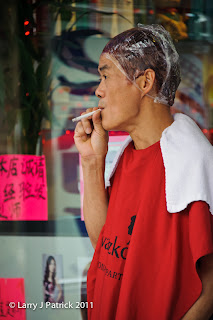Jay did not officially critic this photo. He did, however, look at it on my computer while I was reviewing my shots from the day. Jay wanted to know why I did not include this one in my selection for the day. I told him that I was not sure that people would see what I saw in the image. At which, he said “%@#*! them” ! Jay liked how the image raised questions: what is going-on? why so much white? who are these guys?
Anybody have any answers to his question?
Enjoy.
Camera settings: Nikon D3, Nikon 70-300mm f/3.5-5.6 at 170mm, ISO 1,600, f/8 and 1/90th of a second.
Post Processing: None!
Anybody have any answers to his question?
Enjoy.
Camera settings: Nikon D3, Nikon 70-300mm f/3.5-5.6 at 170mm, ISO 1,600, f/8 and 1/90th of a second.
Post Processing: None!

























